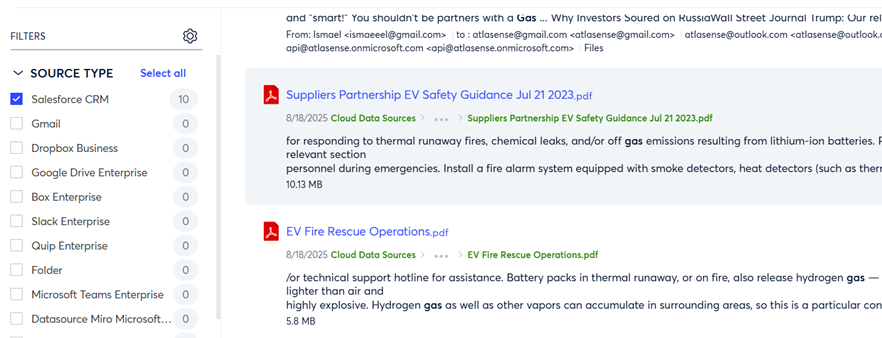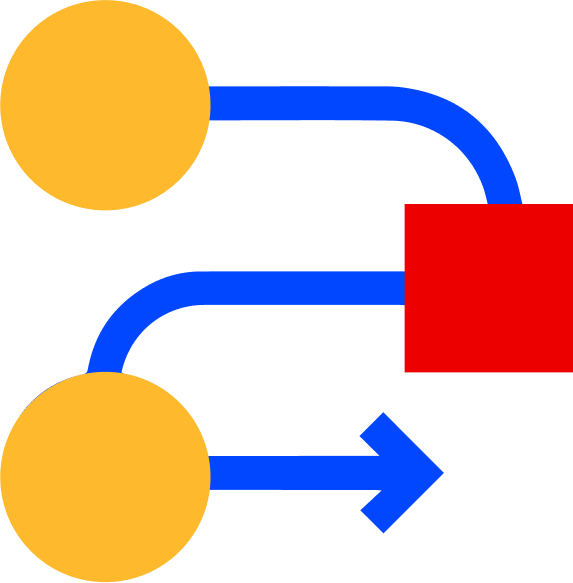Conducting Pre-Litigation Investigations with Onna


Meeting Rule 11 Duties to Conduct a Reasonable Inquiry Before Filing a Lawsuit
Corporate titans battle over business torts as a usual course of conduct. What are a litigant’s pre-litigation obligations before suing another company? In the ocean of concerns for attorneys, there are at least two requirements that must be met when litigation is anticipated: enacting a litigation hold and conducting a reasonable inquiry before filing a lawsuit.
The following article defines a party’s obligations under Federal Rule of Civil Procedure Rule 11 and applies the Rule 11 standards to a hypothetical fact pattern where former employees have started a competing company. The prospective corporate plaintiff suspects the former employees took proprietary information with them before starting the competing company. In compliance with pre-litigation ethical and legal duties, our fictional plaintiff uses Onna to examine electronically stored information including Slack communications and Salesforce data, issue code trade secrets, identify proprietary information that was misappropriated by the prospective defendants, and pinpoint factual information to allege in the complaint.
Understanding Rule 11 Duties
Federal Rule of Civil Procedure Rule 11 has had pop culture references in Jonathan Harr’s A Civil Action (based on a real lawsuit involving groundwater contamination) and more recently in the television adaptation of The Rainmaker. So, in the event a child ever asks, “Hey Mom, what’s Rule 11?” here are the base requirements.
Lawyers certify to the best of their “knowledge, information, and belief, formed after an inquiry reasonable under the circumstances” that any pleading, written motion, or other legal document filed in court meet the following standards: (Predator Int'l, Inc. v. Gamo Outdoor USA, Inc., 793 F.3d 1177, 1182 (10th Cir. 2015).)
(1) it is not being presented for any improper purpose, such as to harass, cause unnecessary delay, or needlessly increase the cost of litigation;
(2) the claims, defenses, and other legal contentions are warranted by existing law or by a nonfrivolous argument for extending, modifying, or reversing existing law or for establishing new law;
(3) the factual contentions have evidentiary support or, if specifically so identified, will likely have evidentiary support after a reasonable opportunity for further investigation or discovery; and
(4) the denials of factual contentions are warranted on the evidence or, if specifically so identified, are reasonably based on belief or a lack of information.
Rule 11’s central purpose is to deter baseless court filings and "streamline the administration and procedure of the federal courts." (O'Rourke v. Dominion Voting Sys. Inc., 552 F. Supp. 3d 1168, 1186 (D. Colo. 2021).) An attorney’s signature on a pleading requires that a "pleading be, to the best of the signer's knowledge, well grounded in fact, warranted by existing law or a good faith argument for the extension, modification, or reversal of existing law, and . . . not interposed for any improper purpose." (Predator at *1182, citing Coffey v. Healthtrust, Inc., 1 F.3d 1101, 1104 (10th Cir. 1993).)
If a pleading is challenged under Rule 11, the central questions are “1) whether the complaint is legally or factually 'baseless' from an objective perspective, and (2) if the attorney has conducted 'a reasonable and competent inquiry' before signing and filing it." (O'Rourke, at *1186, citing Christian v. Mattel, Inc., 286 F.3d 1118, 1127 (9th Cir. 2002) (quoting Buster v. Greisen, 104 F.3d 1186, 1190 (9th Cir. 1997)).)
The key analysis in determining sanctions under Rule 11 is whether a lawyer conducted "an inquiry reasonable under the circumstances." The Advisory Committee note to the 1983 Amendment to Rule 11 provides the following guidance on what constitutes a "reasonable" inquiry: (O'Rourke, at *1185-86, citing Fed. R. Civ. P. 11 advisory committee's note to 1983 amendment.)
The rule is not intended to chill an attorney's enthusiasm or creativity in pursuing factual or legal theories. The court is expected to avoid using the wisdom of hindsight and should test the signer's conduct by inquiring what was reasonable to believe at the time the pleading, motion, or other paper was submitted. Thus, what constitutes a reasonable inquiry may depend on such factors as how much time for investigation was available to the signer; whether he had to rely on a client for information as to the facts underlying the pleading, motion or other paper; whether the pleading, motion or other paper was based on a plausible view of the law; or whether he depended on forwarding counsel or another member of the bar.
Knowing the ground rules for Rule 11, let’s examine what needs to be investigated before filing a complaint against our fictional defendants.
Reasonable Inquiry into Trade Secret Litigation
The Federal Defend Trade Secrets Act (DTSA) requires a plaintiff to identify information that is sufficiently particular to constitute a trade secret. This is information that is kept secret and derives value from not being generally known. Whether such information has been kept secret and thus has value is a question of fact determined in summary judgment or trial. (Quintara Biosciences, Inc. v. Ruifeng Biztech, Inc., 149 F.4th 1081, 1085 (9th Cir. 2025).)
A private right of action for misappropriation of trade secrets is defined under 18 U.S.C.S. § 1836(b). There are few approved pattern jury instructions for DTSA cases, but the Ninth Circuit has criminal jury instructions. Inspired by the lack of civil instructions, IP attorneys prepared excellent model jury instructions that were published in Intellectual Property & Technology Law Journal, that are helpful for litigants: (Dylan W. Wiseman, Jeffrey Judd, and Julian (Pete) Mack, 2021, “Template Civil Jury Instructions Under the Defend Trade Secrets Act,” Intellectual Property& Technology Law Journal, VOLUME 33 • NUMBER 7 • JULY-AUGUST 2021, https://www.buchalter.com/wp-content/uploads/2025/05/Civil-Jury-Instructions-Under-the-DTSA.pdf)
- That the Plaintiff was the owner or licensee of the Alleged Trade Secret;
- That the Alleged Trade Secret is related to a product or service used in, or intended for use in, interstate or foreign commerce;
- That the Alleged Trade Secret qualified as a trade secret at the time it was allegedly misappropriated;
- That the defendant improperly acquired, used and/or disclosed the Alleged Trade Secret;
- That such unlawful acquisition, use, or disclosure was a substantial factor in harming the plaintiff; and
- That the plaintiff sustained actual losses from the misappropriation [or] the defendant was unjustly enriched by the misappropriation.
By using these jury instructions as a model for what we must allege in the complaint and ultimately proved at trial, we can begin an investigation for our “reasonable inquiry.”
Conducting a Reasonable Inquiry with Onna
Every lawsuit begins with the basic questions of who, what, when, where, and how. Onna can answer these questions. Thus by leveraging the capabilities of Onna, corporate attorneys, human resources professionals, and IT can quickly start answering those questions to conduct a reasonable inquiry.
Let’s walk through the process:
What could that information be? Anything that is related to a product or service used in, or intended for use in, interstate or foreign commerce. If it is a pharmaceutical company, it could be a formula for a medication. If a technology company, perhaps the software for self-driving cars based upon years of research and development. The point is, the information is company confidential that is related to a product or service.
Who are the individuals that left the company and started a competing business?
Identifying those former employees is necessary for both enacting a litigation hold and investigating their actions prior to leaving their previous jobs.
 After identifying “who” the former employees are, the next step is identifying what
After identifying “who” the former employees are, the next step is identifying what
sources of data they had access to within the company. This requires searching multiple data sources to identify the Alleged Trade Secret materials and whether the prospective defendants accessed that information.
Enter Onna, which preserves ESI on multiple cloud-based accounts across an enterprise using API-based collection.
If a data source is collected through a user’s account, then the collection process will involve going through an authentication process where the source (e.g. Slack) states what Onna is being given permissions to access.
 Onna then breaks the source down into folders, channels or smaller units from the source to avoid overcollection. The entire account can be collected if necessary.
Onna then breaks the source down into folders, channels or smaller units from the source to avoid overcollection. The entire account can be collected if necessary.
Sources can also be added with the company credentials. In our fictional case, searching for communications where the former employees discussed, copied, downloaded, or in any other way, took information that is sufficiently particular to constitute a trade secret.
In the world of electronically stored information, the analysis of data for when, where, and how, could merge into one singular point on the question of how prospective defendants improperly acquired, used and/or disclosed an Alleged Trade Secret.

For instance, it is possible for an Alleged Trade Secret to be discussed on a Slack channel and saved to a file sharing app such as Box or Dropbox. Onna can search Slack, Box, and Dropbox for ESI that is an Alleged Trade Secret.

Another area of concern for investigation are customer lists. Onna can also connect to Salesforce to search whether any of the prospective defendants in our hypothetical accessed protected information and took it outside of the company for their own personal gain.

Leveraging Onna to Make the Best Reasonable Inquiry based on Knowledge, Information, and Belief for Rule 11 Compliance
Attorneys can use Onna to conduct their reasonable inquiry to determine if trade secrets were improperly acquired and resulted in harm to their corporate client. If these conditions are met to show that the prospective plaintiff’s claims are warranted by existing law and that there is evidentiary support for factual contentions. Then an attorney can be confident that they have met their Rule 11 duty to conduct a reasonable inquiry before filing a complaint.
 eDiscovery
eDiscovery Collections
Collections Processing
Processing Early Case Assessment
Early Case Assessment Information Governance
Information Governance Data Migration
Data Migration Data Archiving
Data Archiving Platform Services
Platform Services Connectors
Connectors Platform API
Platform API Pricing Plans
Pricing Plans Professional Services
Professional Services Technical Support
Technical Support Partnerships
Partnerships About us
About us Careers
Careers Newsroom
Newsroom Reveal
Reveal Logikcull by Reveal
Logikcull by Reveal Events
Events Webinars
Webinars OnnAcademy
OnnAcademy Blog
Blog Content Library
Content Library Trust Center
Trust Center Developer Hub
Developer Hub